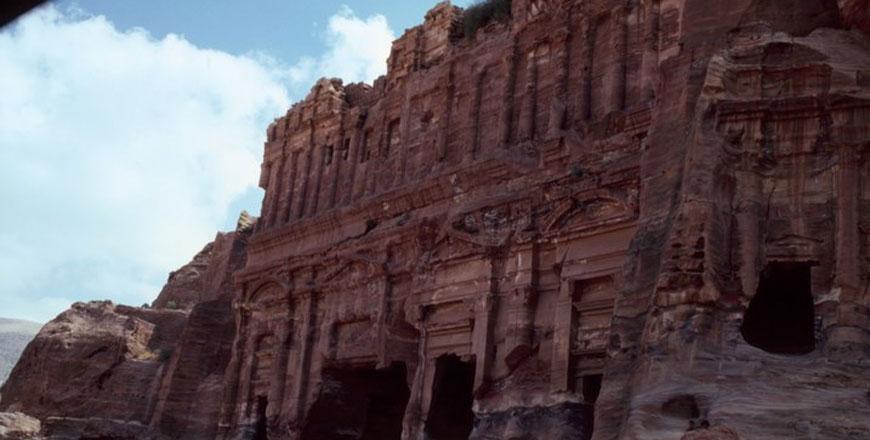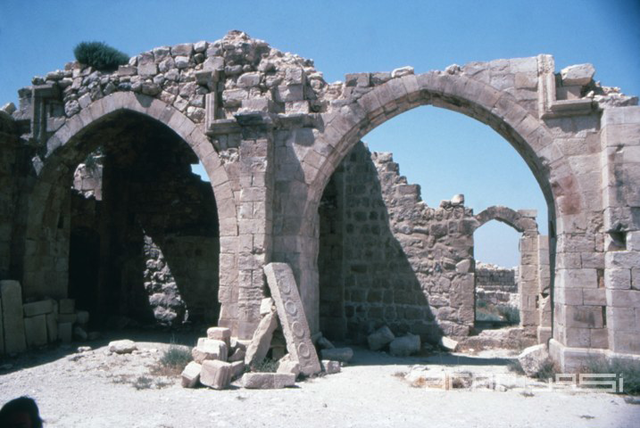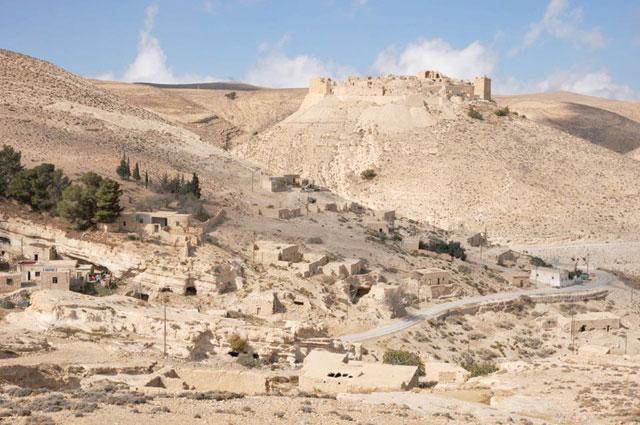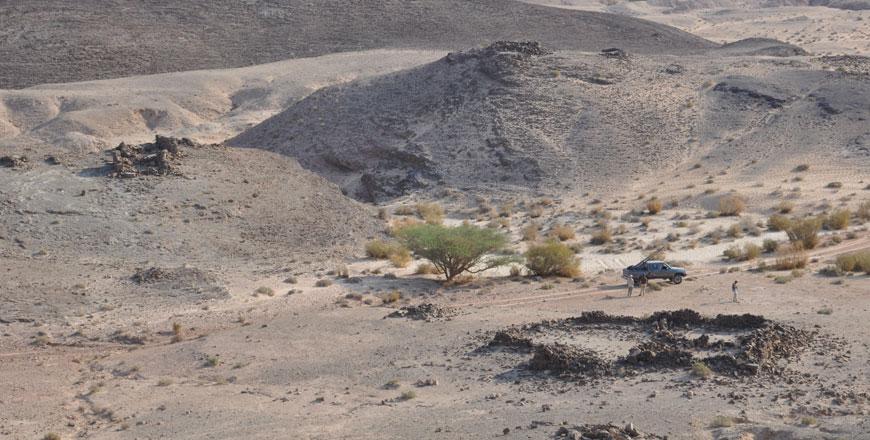You are here
Crusader Heritage: About mediaeval settlements in Petra’s Royal Tombs area
By Saeb Rawashdeh - Jul 10,2024 - Last updated at Jul 10,2024

A view of the Corinthian Tomb in Petra which was built between 40 AD and 70 AD (Photo courtesy of ACOR)
AMMAN — The area of the Royal Tombs in the city of Petra contains the Corinthian Tomb, which is between the Palace Tomb and the Silk Tomb.
The group of Italian scholars studied the area in 2012 and 2013 in order to clarify the presence of the mediaeval structure. Petra was continuously inhabited from the ancient to the mediaeval times, and from the mediaeval to the modern times.
“Certain observations were made on the façade of the Corinthian Tomb and in its immediate surroundings: arrows slits-like windows cut on the eastern side of the façade of the Corinthian Tomb, remains of a masonry structure featuring technologic similarities to Crusader buildings from Petra [Wu’ayra and Habis] and Shobak Castle and some handmade pottery shards, most likely related to Crusader-Ayyubid contexts, are comparable to findings from Wu’ayra, Wadi Farasa and Shobak Castle,” noted Francesca Cheli from the University of Florence.
The masonry of the Corinthian Tomb was very similar to the one applied in the Crusade period (12th century) in Petra and Shobak.
Furthermore, the arrow-slits-like windows on the eastern side of the façade of the Corinthian Tomb could be cut by Crusaders for defensive purposes, Cheli speculated, adding that during the 2016 campaign, the team analysed the stratigraphy of the Corinthian Tomb, with a particular focus on the evidence of carving tools, and we managed to recognise five phases of their use.
“The arrow slits were made during the most recent phase so we can suppose that they were most likely made after the construction of the tomb, probably for a different use,” Cheli said.
Pottery remains and more recent adjustments to the tomb indicate that the area was inhabited during 12th and 13th centuries and such observations were potentially of great interest for clarification of mediaeval settlement patterns in the Petra Valley when Petra was at first re-settled by the Crusaders as a core political and logistical base for the expansion of the Latin Kingdom of Jerusalem in Transjordan.
The pottery evidence presented consist of wheel-made ware, of handmade ware and of handmade painted ware, Cheli said, adding that there is no evidence of any kind of glazed ware.
“In particular, the assemblages contain mainly ‘pre-Crusader’ shard [mostly from Nabataean and Roman-Byzantine periods], some [probable] mediaeval shards and some post-mediaeval shards.
A preliminary examination of the pottery found during the excavations allows to estimate that the archaeological material assemblages cover a long time-span, from the Nabataean to the Ottoman/ Early Hashemite period, the scholar noted.
Since a precise and dependable chronology cannot be drawn only according to pottery analyses some wider stratigraphic reflection must be debated.
“We managed to understand that in the first phase in this area, we have a platform of natural rock that was vertically cut to make a quadrangular space opened on the west side,” Cheli underlined, adding that they currently do not know the exact function of these cuts: a first hypothesis could be that in this phase, the area was used as a quarry for the extraction of building material.
In more recent periods, it was a domestic space since scholars have found several evidences of cooking and consumption activity (cooking pot shards, animal bones, etc.).
Regarding the mediaeval period, and the Crusader phase in particular, some scholars hypothesise that it was a place where a cistern was used, most likely for storing water, possibly connected to a localised (modest) function.
“It seems to be confirmed by the pottery assemblage as well [no glazed wares, only wheel-made plain and handmade wares; most of them display cooking, table, and some little storage forms],” Cheli said, adding that at least for the mediaeval period it could confirm the hypothesis of a change of function of the area [and the Petra valley in general] with the transfer of the central political role from Petra to Shobak, “ Cheli concluded.
Related Articles
AMMAN — Petra and its hinterland, particularly Montreal (Shobak Castle) were part of a defensive system in 12th and 13th centuries.
AMMAN — Besides its military role, the Shobak Castle used to stand as an important commercial centre during the Ayyubid and Mamluk periods,
AMMAN — Researchers are digging up hints of an important Ayyubid copper production site in Wadi Al Ghuwaybi, an American anthropological arc
















